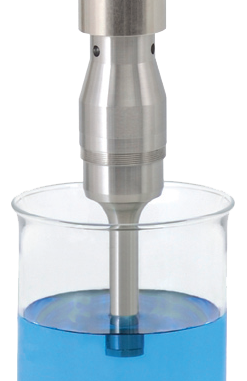The sonication method is a very effective method for breaking up magnetic bead aggregates, but it is not a panacea. It is an efficient technique once all of the parameters are set, but it is a complex technique with some important limitations, especially for high volume processes.
Choice of the most adequate probe or ensuring a consistent reproducibility are some of these limitations we must take into consideration before making a definitive decision. We will discuss them in this article. However, in spite of these limitations, sonication has been proven to be a highly effective method to break up magnetic bead aggregation and one of the most convenient ones.
This post is about resuspension techniques, such as the sonication method, and how they can solve magnetic bead aggregation. If you are interested in this topic, download our free ebook The basic guide for resuspending magnetic beads:
The 4 main limitations of using Sonication Method
The limitations to consider about the sonication method are:
1. You must have the sonication probe in contact with the sample
This implies strict control over probe cleaning in order to avoid cross-contamination and contamination in general.
2. The probe design is important
If you find that one probe is highly efficient for one type of vessel and one volume and then must scale up or down, you cannot extrapolate probe properties for a different vessel, different volume, different vessel material or different shape vessel. You must design a different probe for each different volume and change in vessel.
3. Reproducibility of sonication results is challenging
The transmitted energy is strongly dependent on the probe position, specifically how deeply the probe is immersed. A rise in temperature especially in small volumes can affect reproducibility because it is can cause damage to the bead ligands. Normally in large volumes reproducibility due to temperature extremes is not a problem since there is space for the extra energy-induced heat to dissipate.
4. The microstreaming effect is limited to the area surrounding the vicinity of the probe
Therefore repeated cycles of mixing, homogenizing and sonication are required to effectively break up a maximal amount of aggregations.
Despite the above limitations of sonication, this method is an extremely useful technique to break apart aggregates and maintain functionality of the coupled magnetic beads. Of course it is always best to avoid the formation of aggregates altogether, but if aggregation is an unavoidable fact of your process, sonication is an excellent option.
Don't forget to check these posts from our blog in order to get a deeper insight into magnetic bead resuspension:






